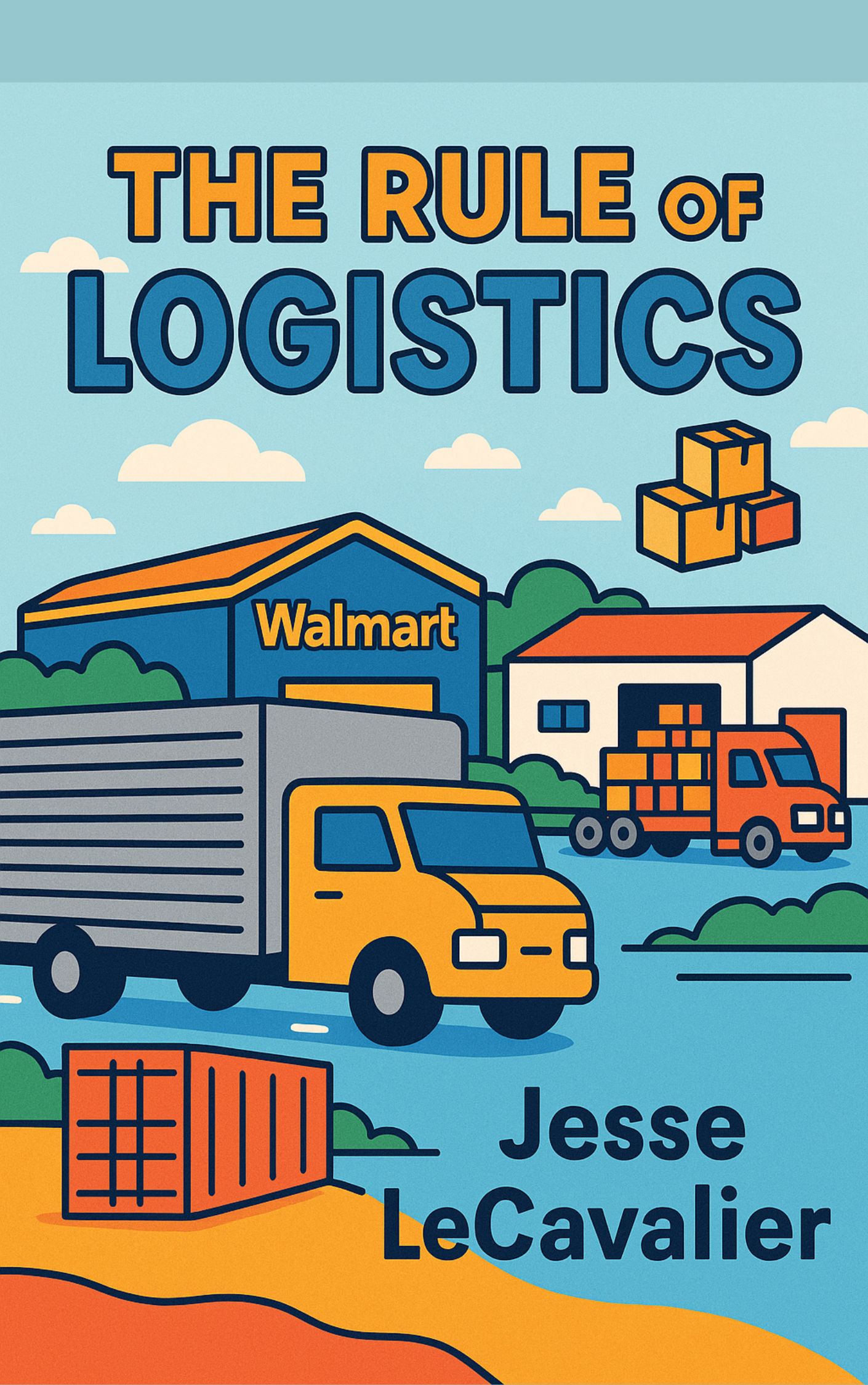Description
Walmart is not just a store where people buy low-cost goods. It is a giant machine of logistics that has changed the way our world works. Since it opened in 1962, the company has grown into one of the largest organizations on the planet. Behind every shelf of shampoo, bread, or television sits a huge network of warehouses, trucks, data systems, and workers. To keep millions of items moving smoothly, Walmart has rebuilt entire landscapes, reorganized cities, and influenced how people live.
At the heart of it all is logistics. Logistics means moving materials across time and space as smoothly as possible. The less friction there is, the better. Walmart’s entire business depends on this idea. The company makes money by selling goods at very low prices but in extremely high volumes. To make this work, every item must move quickly from factories to trucks, from warehouses to shelves, and finally into the hands of shoppers.
Efficiency drives every choice Walmart makes. Its stores are plain, box-like buildings, but this simplicity is deliberate. They are not designed to impress but to function as nodes in a supply chain. Their purpose is to keep merchandise flowing without pause. Data, especially barcodes and digital tracking, plays a key role in this system. Every scan at a checkout counter generates information that helps Walmart decide what to ship, where to place it, and even where to build new stores.
Modern logistics is about more than physical tools like trucks, pallets, or shipping containers. It also relies on abstract concepts of time and space. Goods become coded as numbers and barcodes, while maps and clocks break the world into measurable units. When a package travels across the ocean, its journey is not only physical but also tracked as streams of data. This way of seeing the world—where almost everything becomes measurable, predictable, and optimized—shapes not only business but also how we live. Checking a train schedule, ordering groceries online, or tracking a delivery are all examples of logistics slipping into everyday life.
Architecture itself becomes part of logistics. Walmart stores look nearly identical no matter where you are. The reason is simple: standardization saves money and speeds up the flow of products. Inside the store, most of the space is for displaying goods rather than storing them. Trucks deliver goods in steady rhythm, and items go straight from the truck to the shelf. Nothing is left sitting in warehouses longer than necessary. Even the design of buildings is preplanned through reusable templates, with only minor adjustments made to satisfy local governments. The main goal is throughput—the speed at which goods move from back door to customer basket.
Choosing store locations is also guided by logistics. From the beginning, Walmart expanded outward in circles from its original home in Arkansas. Every new store had to be close enough to a distribution center for trucks to restock quickly. Highways became lifelines for this expansion. Locations were not chosen for their cultural or community value, but for their measurable potential. They were evaluated like numbers in a formula: traffic flow, demographics, and future growth forecasts. Sometimes the company built just outside city limits to avoid stricter taxes or regulations while still drawing the same shoppers. In Vermont, where the company met resistance, it ringed the state with stores on its borders, effectively surrounding it.
Behind the shelves, warehouses reveal an even sharper picture of Walmart’s logistical logic. Distribution centers are designed like massive machines, and workers are expected to function like cogs within them. Millions of products must be sorted and sent to the right store at the right moment. To do this, Walmart uses systems like voice-directed headsets that tell workers exactly what to pick, where to move, and when to act. Workers follow robotic voices and scanners, making them extensions of the software. Sometimes, mechanical cranes assist them, blending human and machine into a single working system.
The influence of Walmart even reshapes its hometown. Unlike most big corporations that base their headquarters in global cities, Walmart stayed in Bentonville, Arkansas. The small town never had a strong urban core, so Walmart was free to rebuild it in its own image. Now Bentonville is filled with vendor offices from companies like Procter & Gamble and Clorox, all of which must maintain a presence there to work with Walmart. These “vendor villages” look like normal neighborhoods but house executives and business representatives from around the world. Bentonville has gained luxury housing, hotels, shopping centers, and even a world-class art museum, all funded by Walmart wealth. The town has become a strange blend of rural setting and global influence.
But what does all this mean for society? A world centered on logistics can be very efficient, but efficiency is not the same as happiness. Logistics aims to satisfy quick desires—like getting a product fast and cheap—but it does not guarantee deeper well-being. Researchers distinguish between short bursts of pleasure and the longer, richer satisfaction that comes from living a meaningful life. Walmart’s world delivers goods without delay, but it may not deliver purpose or joy.
If everything becomes organized only around speed and throughput, communities risk losing values beyond consumption. We may find ourselves in cities shaped not for people but for supply chains, in workplaces designed not for creativity but for robotic repetition. Yet history shows change is possible. Sweden once switched from driving on the left side of the road to the right in a single day through collective effort. If people can reorganize something as fundamental as a national road system, they can also choose to rethink how logistics shapes our lives.
In the end, Walmart is more than a retail store. It is a symbol of how logistics has come to dominate our world. Its methods show how goods can move with incredible precision, but they also raise questions about what kind of future we want. Do we want a society built only for speed and consumption? Or do we want one built for community, meaning, and human well-being? The choice, though hidden beneath the hum of trucks and the glow of store lights, is still ours to make.





